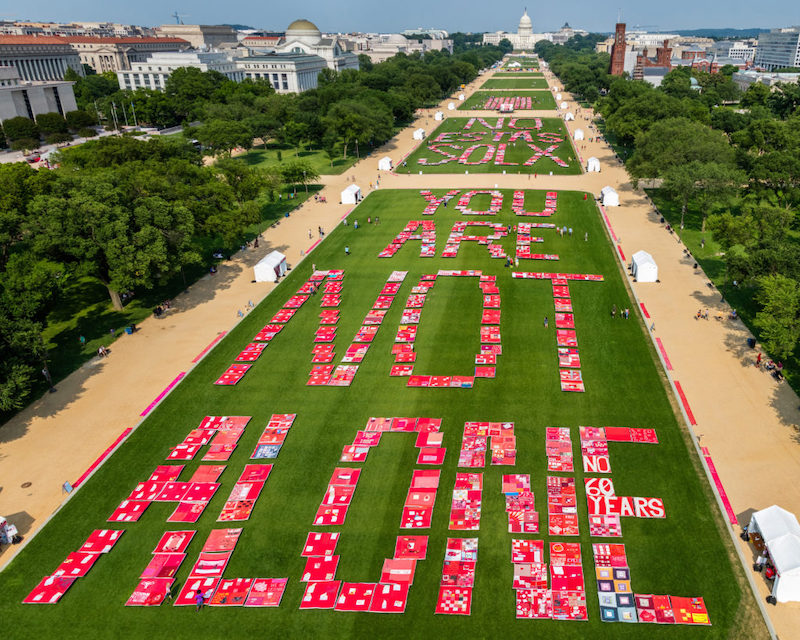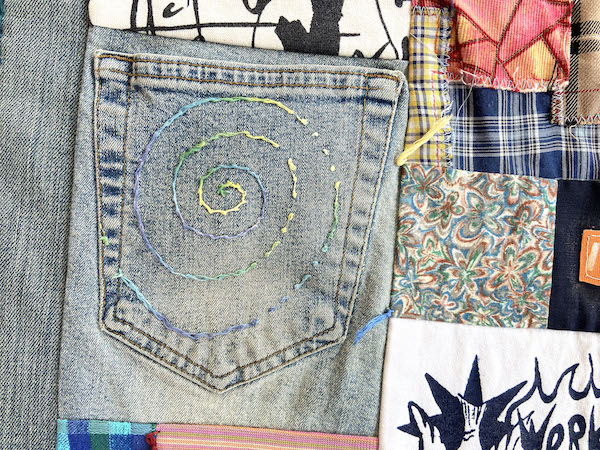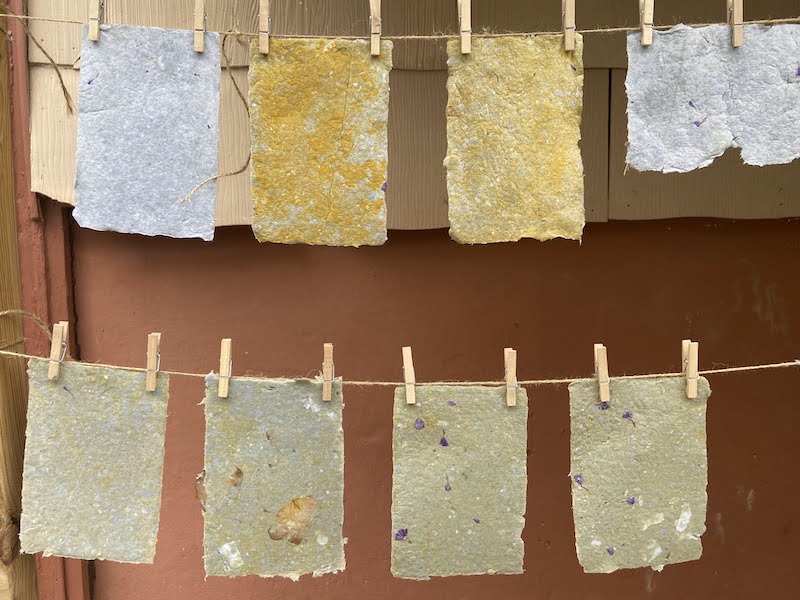Handmade paper, created by Hannah Brancato, Sanahara Ama Chandra, and collaborators.
“Lately I’ve been making paper,” says Hannah Brancato, an artist and educator based in Baltimore.
Beautiful paper – like mottled leaves, puckered as the barnacled hull of a boat, textured as the moss-covered shingles of a country cottage.
Surfaces surprisingly alive.
The paper is for Dreamseeds, a project Hannah is creating with collaborator Sanahara Ama Chandra, a healer and sound artist. The project culminates this fall as “an installation of textiles, sound, and interactive components that invites current and budding activists and visionaries in Baltimore to develop visions for the future,” according to Hannah’s website.
The idea for the project arose in the wake of Move Slowly, her 2021 project exploring “the toll activism can take on our bodies, relationships, hearts and minds.” Built around recorded conversations with creative activists, Move Slowly revealed to Hannah the importance of hope as an antidote to the burnout often experienced by those who fight for change.
“The challenges can feel so overwhelming,” she says. “It’s important to take time to reflect and rebuild your reserve – to retain your belief in possibilities for the future.”
In planning Dreamseeds, Hannah and Ama kept returning to the notion of kindling hope; regenerating a sense of promise for the future. This brought the two to composting – taking something old and spent and transforming it into something new. Turning fibrous pulpy remains into usable sheets – making paper – became the perfect metaphor for what they were after.
As lead-up to the exhibition, Hannah and Ama have been conducting workshops, taking participants from diverse community groups through the process of making unique sheets of paper, then having them write their visions for the future on it. The completed pieces (the “dreamseeds”) will be part of the installation.
With Dreamseeds, Hannah and Ama are creating a forum for people to reflect on and express hope.
Hannah is no stranger to such community-oriented work.
In 2010, she co-founded FORCE: Upsetting Rape Culture, an art and activist collective dedicated to ending sexual violence and building a culture of consent. FORCE is best known for the Monument Quilt, a project including more than 3,000 quilts, each with a story written, stitched, or painted onto it by a survivor of sexual or intimate partner violence, or an ally. Representing a worldwide community of hope and healing, the Monument Quilt had its 50th and final display on the National Mall in the spring of 2019.

The Monument Quilt on the National Mall, 6/9/19, Public Art Project by FORCE: Upsetting Rape Culture; photo by Nate Gregorio
It was an immense undertaking, one especially well-suited for Hannah’s need to connect to others in ways that matter and effect change.
“My art practice is rooted in my desire for personal and social transformation,” she notes. “I work collectively, value the process as much as the end product, and understand myself as a part of something much greater than any individual person.”
From FORCE to Dreamseeds and everything in between (Inheritance of White Silence, a 2020 project interrogating her own white privilege; Resistance Monument, a 2018 commission for the Benjamin Banneker Historical Park and Museum in Annapolis), Hannah has always pursued work that is, in her words, part of a “personal and collective journey.”
Both personal, and collective.
And a personal aspect she has only recently begun to share publicly is the part Emmeline Jeanne Brancato – Emmy – plays in it all.
Emmy and Hannah were sisters, Emmy two years older. Growing up, the two were close, reading and creating art all the time, and making sense of life together. In college Emmy became a cultural anthropology major studying sustainability, and her passions challenged Hannah to think of the world in larger ways than she had been.
“She was a role model to me, always pushing me to see the bigger picture,” says Hannah.
In July 2005, just before starting her senior year, Emmy died in a car crash.
For Hannah, the loss was as transformational as it was devastating.
In a TEDx Talk earlier this year, Hannah talked about how losing Emmy 17 years ago activated her in ways she could not have imagined, setting her on a path of understanding her own trauma, and the role collective grief has in social justice work.
“I felt really isolated in my grief,” she says. “I felt that people in my family couldn’t understand what I was going through, and I think we all felt that way; we all had a unique relationship with Emmy. Mom helped us see the connections between what we were all dealing with when in her own process of grieving she began to cut apart and piece back together clothes and embroidered garments my sister had made, making memory quilts and giving them to her friends and loved ones. By having one I began thinking of myself as a member of a community impacted by a shared trauma.”

Memory Quilt for Emmeline Brancato, created by her mother Shelley Kappauf for Hannah Brancato
For Hannah, this was an indelible experience of communal healing from quilting – an early seed of FORCE’s Monument Quilt project.
“FORCE fully came out of Emmy for me,” says Hannah. “Though I’ve never said that before.”
Those who have experienced transformational loss understand grief manifests in layers and over years. We grieve, taking on only as much as we can bear, and only in ways effective in the moment. For a long time, Hannah’s grieving demanded from her a major public art and social justice project.
“The grief of losing Emmy felt completely overwhelming, so I found something really big that I felt I could have a handle on. Telling the story of all sexual survivors everywhere was what I felt I could get a handle on, which is really ironic – that feeling easier to manage than dealing with my individual grief.”
And now, with Dreamseeds, ready for her individual grief, Hannah’s sister is much more in the foreground.
“Emmy was years ahead of me, even though she was just 21 years old when she died. She had a better grasp on how tough things were in the world, and her response was to study the environment and sustainability. Now, with Dreamseeds, on the handmade paper, people are writing visions for the future about the way we live in relation to the environment, and that makes me think of Emmy and her work and research.”
As a teen, Hannah imagined collaborating with her sister when they grew up; maybe now, finally, she is.
Ethereal as a ghost, clear as a muse, in lovely leaves of paper, with each dreamseed: Emmy – right there with her.
Surprisingly present; a gift.
Hannah Brancato is an artist and educator based in Baltimore. Hannah’s art practice is grounded in collective storytelling, and creating public rituals to bring people’s stories together.

